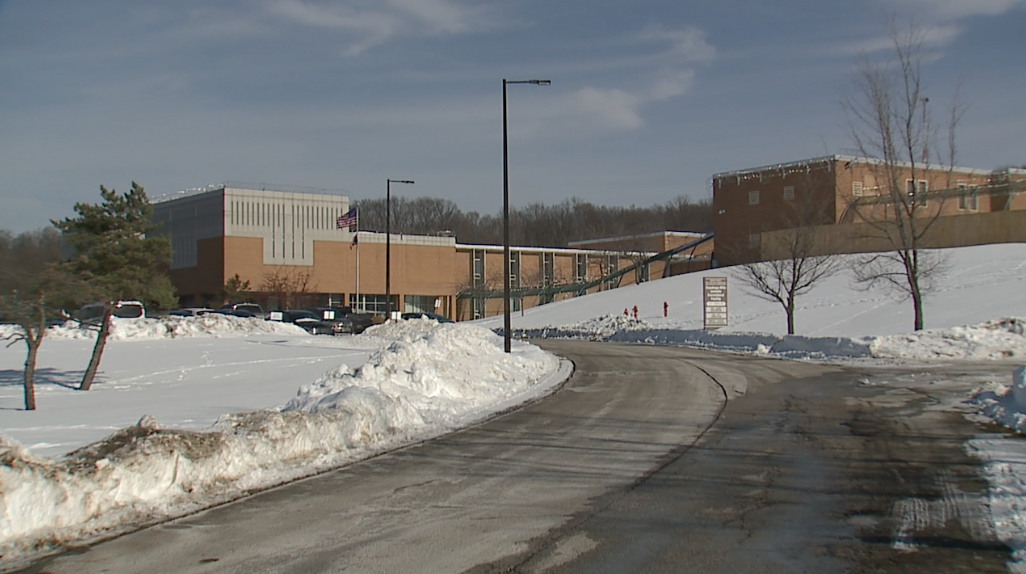COLUMBUS, Ohio — An Ohio Department of Youth Services R.E.C.L.A.I.M. advisory board voted on Friday to commission a study looking at the program’s past three years.
The study comes after the juvenile program drew attention tied to the suspect in the slain Cleveland Police officer Shane Bartek murder case.
“When public officials in the media raise questions about programs connected to our agency, we need to listen and do our best to provide answers,” D.Y.S. director Amy Ast said. “What we heard today from the judges is R.E.C.L.A.I.M. is working. If there's any opportunities for us to make improvements, that’s what this study will tell us.”
The last study into R.E.C.L.A.I.M occurred in 2014, and a 10-year study is set to occur in 2024.
Earlier this month, News 5 highlighted how Cuyahoga County prosecutor Michael O’Malley called out the state’s R.E.C.L.A.I.M. program, which was originally intended to prevent overcrowding at juvenile detention centers and rehabilitate teens.
“They have put cash incentives to not hold kids accountable for their violent crimes and it's wrong,” O’Malley said during an interview in January.
The program, which stands for “Reasoned and Equitable Community and Local Alternatives to the Incarceration of Minors,” currently offers fiscal incentives to county juvenile courts if they keep their incarcerated youth population down. That funding is then used for alternative rehabilitation programs for juveniles.

As a 2018 R.E.C.L.A.I.M. oversight report points out: “Courts have an opportunity to increase the funds available locally by diverting youth from DYS institutions.”
The question of incarceration versus probation garnered attention after it came to light that 18-year-old Tamara McLoyd, the woman accused of murdering Cleveland Police officer Shane Bartek, had been in and out of trouble for years in the juvenile court system.
It started in 2017 when a then-14-year-old McLoyd was found delinquent in Cuyahoga County Juvenile Court on assault charges and was sentenced to probation, according to county records.
A year later, those records show McLoyd was back in trouble, charged with domestic violence. Once again, court records show she was sentenced to probation.
In 2020, Cleveland police said McLoyd punched a woman in the face outside a cookout in the city's Hough neighborhood, then returned with a gun and shot at the woman.
Records show that case was later dismissed, but not before McLoyd was back in trouble.
In October 2020, a Kipton man told Lorain County deputies that two men pulled guns on him and robbed him in his home after meeting with a woman he messaged on the dating website "Plenty of Fish."
Investigators said the woman was a then-17-year-old McLoyd.
Court records show the teen cut a deal with prosecutors and again received probation on October 28, 2021.
On January 13th, the Lorain County Prosecutor's Officer released this statement regarding the handling of Tamara McLoyd's case:

The timeline shows a pattern where McLoyd was not incarcerated in the Department of Youth Services (DYS) system, and some have tied this pattern to an unintended effect of the R.E.C.L.A.I.M. program.
RELATED: Off-duty Cleveland police officer killed in carjacking identified
“It may appear to some that finances were involved in the decision to put her on probation,” O’Malley said. “I don't know if that's the case. Judges shouldn’t be in the position where people second guess what their decisions were based upon. It’s all 20/20 now, but what we need to do is eliminate that question mark.”

O’Malley brought those concerns to Columbus and the R.E.C.L.A.I.M. advisory board meeting as the panel took a closer look at the program’s effectiveness in today’s landscape.
“The Department of Youth Services can do a lot, but with R.E.C.L.A.I.M. dollars with us in communities, we can do more,” board member and Franklin County Juvenile Judge Kim Brown said.
For the purpose of reducing overcrowding at DYS facilities, experts told News 5 the program worked. From 2009 to 2020, participating juvenile courts reported a decline in juveniles committed to DYS., including Cuyahoga County, which went from admitting 293 juveniles to DYS in 2009 to 50 juveniles in 2020.

Right now, Ast said it has about 380 youth in its custody spread across its three campuses, including 84 at Cuyahoga Hills. The average stay inside one of their facilities is 18 months. Additionally, Ast said there is also about 226 youth on parole.

“Those findings indicate there have been less overall felony crime among juveniles in the state,” D.Y.S. Deputy Director Jordan Argus said during a presentation Friday.
“There should never be dollar signs in the administration of justice and that’s what I'm trying to eliminate,” O’Malley said.
It's not clear yet when the study will be completed, but any changes to the R.E.C.L.A.I.M. program would still need to come from the Ohio General Assembly.
To learn more about the R.E.C.L.A.I.M. program and how funding is determined, click here.





